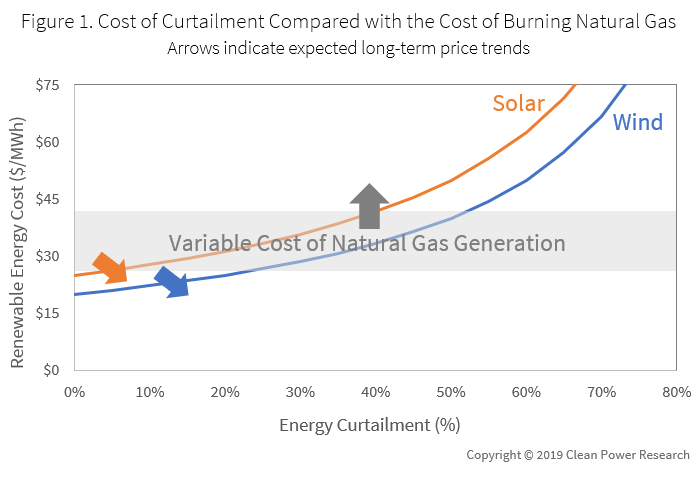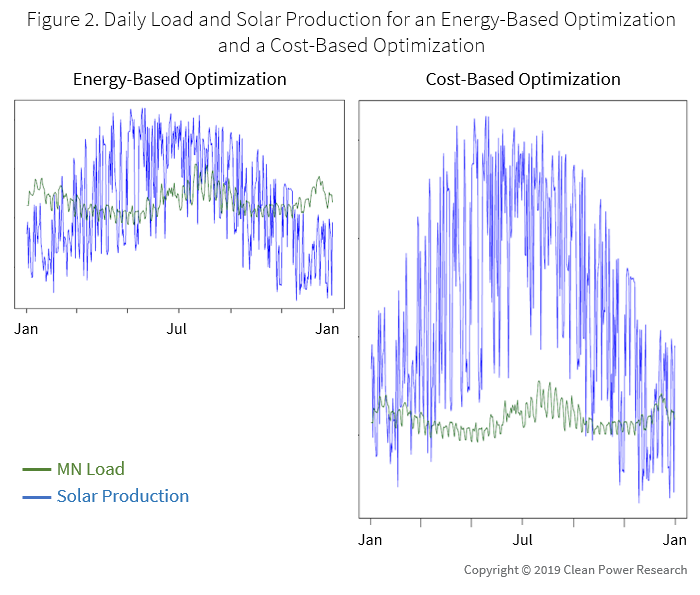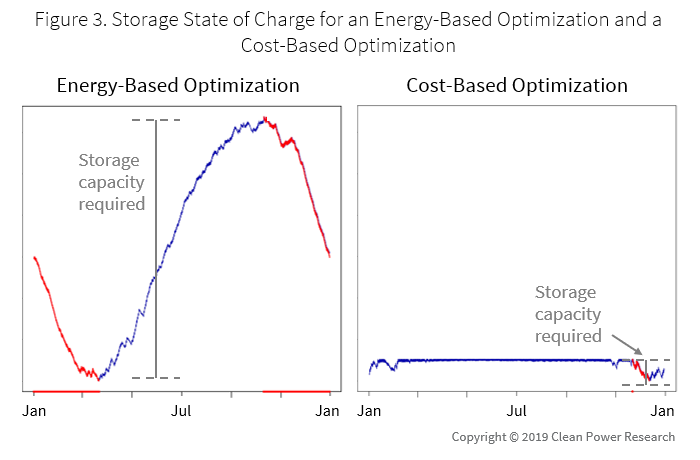Last month, Utility Dive highlighted one of the major findings from our recent Minnesota Solar Pathways work: Minnesota study finds it cheaper to curtail solar than to add storage. In this article, we explain how some curtailment of low-cost renewables such as solar and wind generation is a cost-effective alternative to ‘seasonal’ energy storage.1
Before diving in, it’s important to understand how low solar and wind costs have become.
Low solar and wind costs lead to economic curtailment
Many people outside the energy industry are surprised to learn that solar and wind are now the low-cost generation resources for most utilities. This is because solar costs are $25/MWh to $30/MWh today while wind costs in favorable locations are around $20/MWh. Both of these all-in costs are on par with the average cost of wholesale energy, which is a variable-only cost.
Historically, solar developers, renewable advocates and others have been deeply concerned with the curtailment of renewable energy. Ironically, the most important implication of low-cost solar and wind is the ability to curtail some renewable energy production and still generate energy below the variable cost of natural gas generation, as illustrated in Figure 1. And this is true even though we are experiencing historically low natural gas prices.

We’ve established that solar and wind will be lowest-cost generation resources even with modest curtailment. Next we turn our attention to the optimum sizing of solar, wind and storage capacities.
Capacity optimization: energy based vs. cost based
It is common for renewable advocates and even some regulators to approach renewable generation with the mindset that every bit of renewable energy production should be used. With this approach, renewable energy resources are sized to produce the amount of energy needed on an annual basis. Storage resources are then sized to shift renewable energy to meet load. This can be referred to as an energy-based optimization.
Alternatively, system planners and some renewable developers apply a cost-minimization mindset. This approach sizes renewable energy and storage resources to minimize the total cost of the system.
Let’s look at a scenario that was evaluated in the MN Solar Pathways study. As illustrated in the figures below, moving from an energy-based (left) to a cost-based optimization (right) increases solar capacity and decreases storage capacity dramatically. A similar analysis can be run for wind capacity or for the combination of wind and solar capacity, but for ease of visualization, we provide a solar-only illustration.
In Figure 2 we observe the effect of increasing solar capacity on the daily solar energy production (blue line) relative to the Minnesota load (green line). Increasing the solar capacity shifts the daily solar energy production upwards. As a result of this shift:
- Extended periods of under-production (during the winter months) are greatly reduced.
- Periods of over-production (during the late spring and summer months) are further increased.

In Figure 3 we see how the amount of energy stored changes on an annual basis (the storage ‘state of charge’) for both an energy-based optimization and a cost-based optimization. In both optimizations, energy storage is used to shift renewable energy from periods of over-production to periods of under-production. For the energy-based optimization, this means shifting renewable energy production seasonally.
By contrast, for the cost-based optimization, renewable energy production shifts on the order of days, not months. The red part of the curve denotes the maximum period of energy shifting. As a result, the cost-based optimization offers a nearly ten-fold reduction in the required storage capacity at the expense of a two-fold increase in solar capacity. This is an economically favorable tradeoff for both current and the future solar-to-storage cost ratios we modeled in the MN Solar Pathways project.

So what?
In most parts of the country, we’re pretty far from the levels of solar and wind penetration that would make it beneficial to optimize solar and wind capacities against seasonal energy storage capacity. Nonetheless, we need to begin thinking about these issues today given the pace of our regulatory processes and the fact that renewable contracts last 15-25 years—well into the time-period when we can expect moderate amounts of energy curtailment.
Too soon you say? Maybe, but some utilities such as Hawaiian Electric Company and NV Energy have already adjusted their RFPs to procure renewable energy capabilities instead of renewable energy generation. As reported by Greentech Media (emphasis added):
“Aside from the impact the contracts could have on Hawaii’s electricity landscape, WoodMac’s head of storage research Ravi Manghani said the unique PPA structures tied to some of the contracts signal overall trends for the storage industry. AES’s 25-year, 30-megawatt solar and 120-megawatt-hour storage PPA, for instance, uses a monthly “lump sum payment” to the developer based on net energy potential and facility availability, rather than energy delivered.”
Ultimately, optimizing solar, wind and storage capacities based on cost (as opposed to energy) has a number of important implications. Some of these are already obvious, like updating the structure of PPA contracts to value energy services as opposed to just energy. Others will take time to become clear.
If you’d like to learn more or have a study run in your service territory, Clean Power Research’s consulting group would be happy to discuss the services we offer.
1When we say ‘curtail,’ we mean discarding renewable production that exceeds the serviceable load. When we refer to ‘seasonal’ energy storage, we’re referring to energy storage that shifts renewable energy production over the course of months or weeks.
